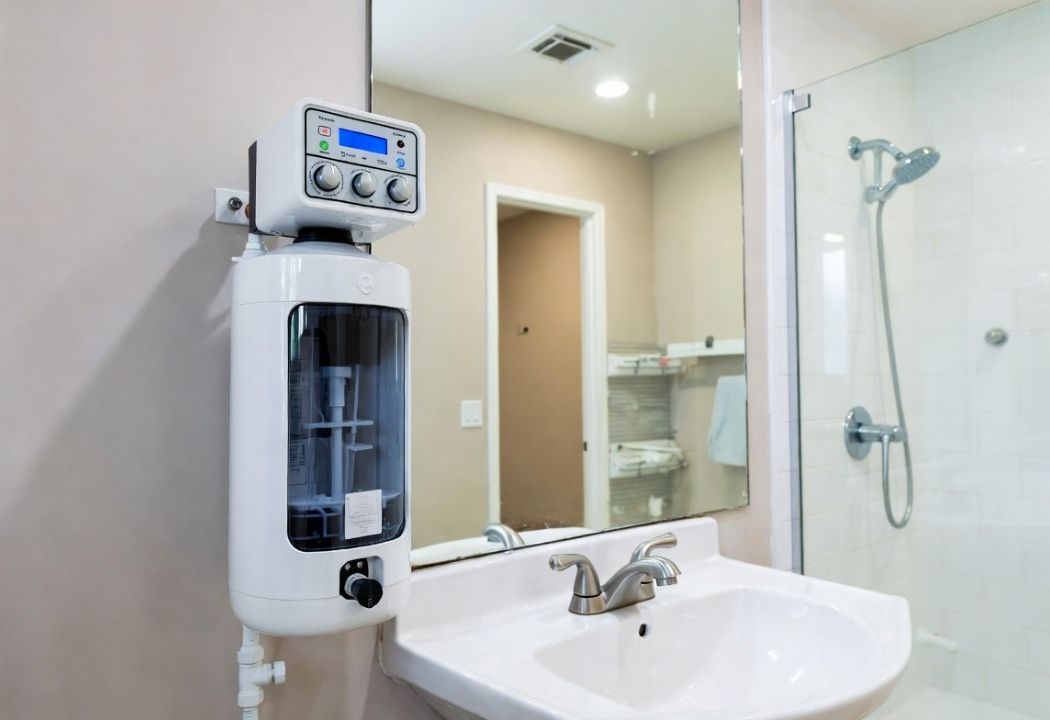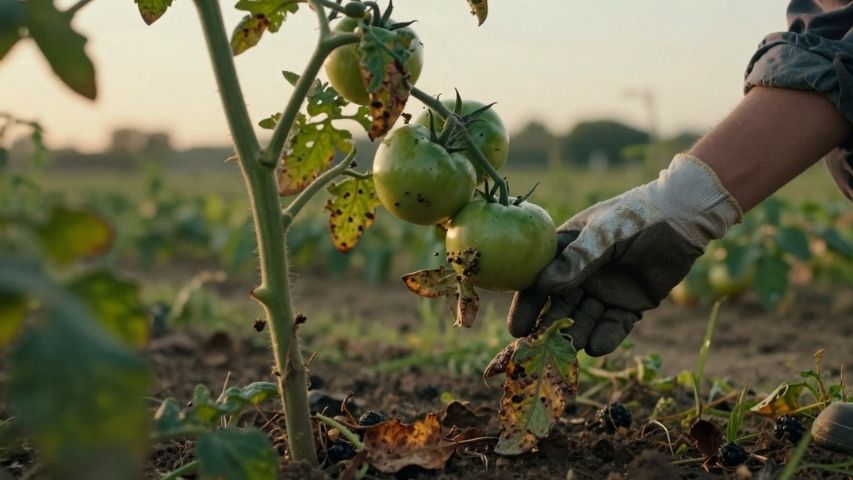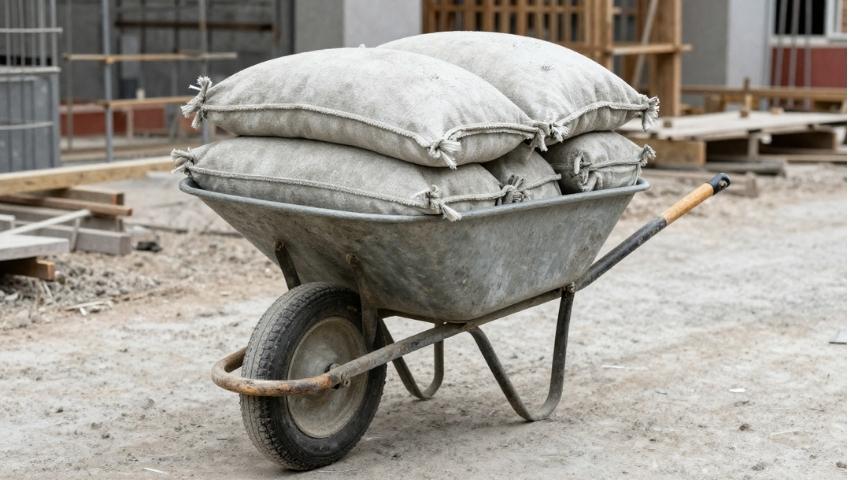Rose bushes are often admired for their beauty, fragrance, and charm, but when it comes to cultivating a thriving rose garden, the attention shouldn’t stop at the blooms. Beneath every stunning rose lies the “ground cover” – an integral part of rose care that impacts not just the health of the plant but also the aesthetics of your garden.
Whether you’re a novice gardener or a seasoned green thumb, understanding the concept of ground cover when growing roses can enhance the look of your flowerbeds and provide essential benefits to the plants themselves. This blog will explore what ground cover for roses is, why it matters, and the best options to consider for your garden.
What Is Ground Cover?
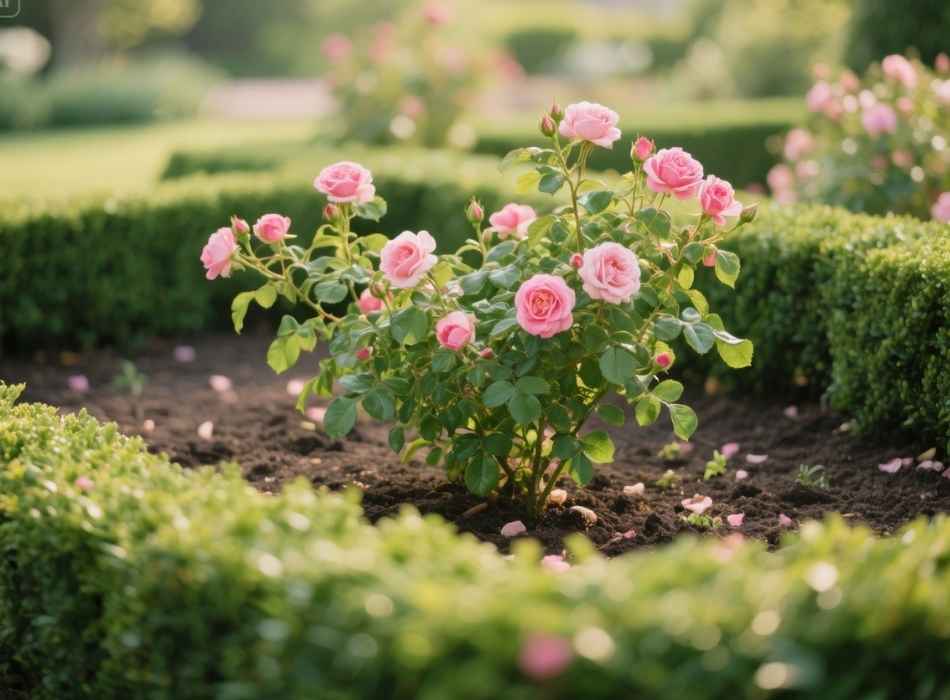
Ground cover refers to the plants or materials used to cover the soil surrounding your roses, protecting it and improving the overall garden environment. While “ground cover” can have various definitions depending on the context, in rose gardening, it typically serves practical and aesthetic purposes.
The Role of Ground Cover Around Roses
Using ground cover around roses does more than make things look tidy. Here are its primary functions:
- Moisture Retention: It reduces water loss from evaporation, keeping the soil moist and minimising your watering needs.
- Temperature Regulation: Ground cover can help regulate soil temperature, keeping roots cool during hot summer days and protecting them during colder temperatures.
- Weed Suppression: By covering exposed soil, ground cover prevents sunlight from reaching weed seeds, reducing competition for nutrients.
- Erosion Control: It prevents soil erosion, especially during heavy rainfall, ensuring your roses remain well-rooted.
- Visual Appeal: A well-chosen ground cover adds depth, contrast, and colour to your rose garden, enhancing its overall design.
Why Is Ground Cover Crucial for Roses?
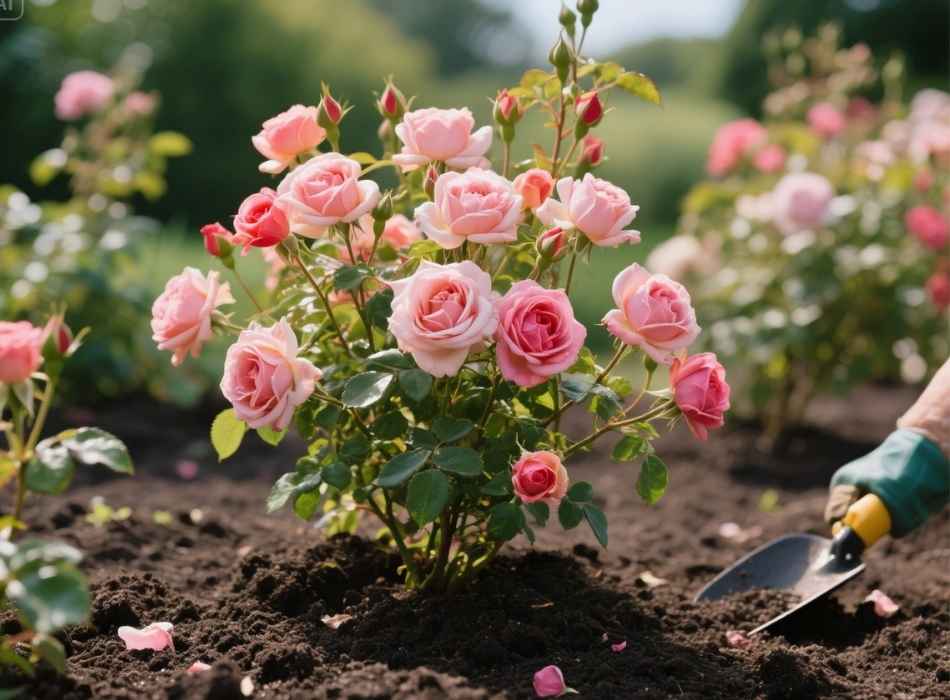
Roses are demanding plants that require specific care to look their best and bloom abundantly. While many gardeners focus solely on pruning, feeding, and pest control, the soil and its coverage play a crucial role in healthy growth.
Reasons to Incorporate Ground Cover for Roses
- Supports Root Health
Roses thrive when their roots are protected from harsh soil conditions. Ground cover moderates temperature extremes that can stress rose roots, especially in summer or winter.
- Prevents Compaction
Bare soil surrounding roses is prone to compacting over time, which can prevent water and nutrients from adequately reaching the roots. Ground cover mitigates this issue by keeping the soil light and airy.
- Enhances Pest and Disease Prevention
Some organic ground covers, like bark mulch, can reduce the spread of diseases like black spot (a common rose issue) by limiting water splashing onto leaves. Certain living ground cover plants also naturally repel pests.
- Saves Time and Effort
Weeding and watering take up a lot of gardening time. Good ground cover reduces these chores, allowing you more time to enjoy your blooms.
- Improves Garden Appearance
A beautiful rose garden is as much about the space as it is about the plants. Ground cover neatly ties together the landscape, preventing patches of exposed soil from detracting from your garden’s charm.
Types of Ground Cover for Roses
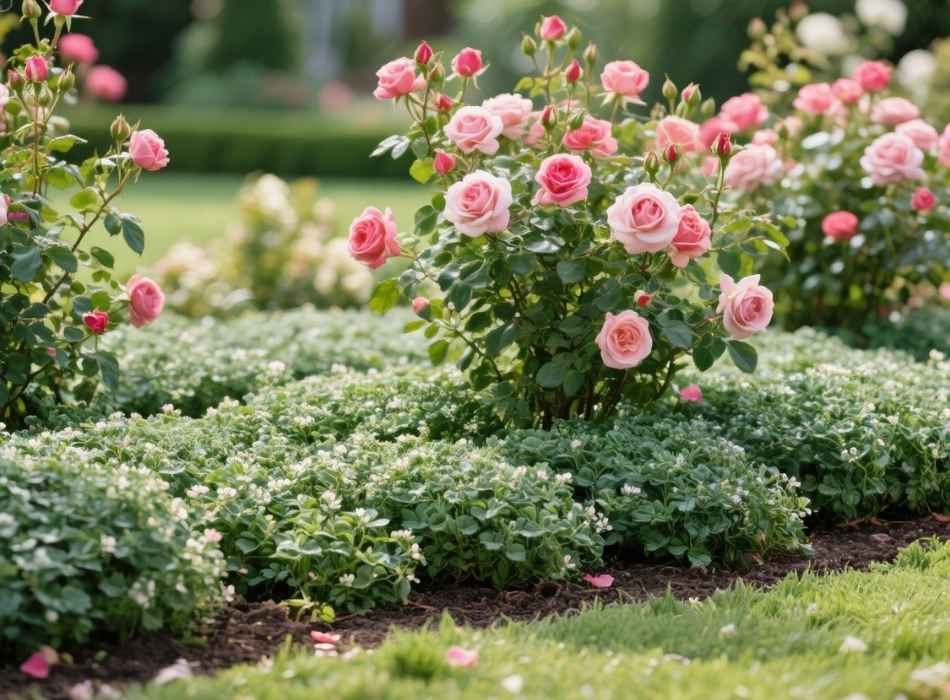
Choosing the right ground cover depends on your garden’s style, climate, and whether you aim to protect your roses or add decorative flair primarily. Here are some popular options to consider:
1. Mulch
Mulch is one of the most common choices for rose ground cover. It’s practical, attractive, and relatively easy to source.
- Best Mulch Options for Roses:
- Wood Chips/Bark Mulch: Offers excellent weed suppression and a natural appearance.
- Peat Moss: Improves soil quality over time and retains moisture well.
- Straw: A budget-friendly option that maintains soil moisture.
- Compost: Adds valuable nutrients to your soil as it breaks down.
Mulch comes in various colours and textures, so you can choose one that complements your landscaping theme.
2. Living Ground Cover Plants
If you prefer a lush, green base to complement your roses, living ground cover plants are a fantastic option. They create an evergreen layer over the soil and can bring additional colour through flowers.
- Top Ground Cover Plants for Roses:
- Creeping Thyme: A low-growing herb that adds both fragrance and small purple blooms around your roses.
- Lamb’s Ear: Known for its silvery leaves, it brings a soft, stunning contrast to rose flowers.
- Sweet Alyssum: Produces a carpet of tiny, fragrant blooms in white, purple, or pink, and attracts beneficial pollinators.
- Creeping Jenny: A trailing plant with bright green foliage, perfect for cascading over garden edges.
- Sedum (Stonecrop): Drought-tolerant and ideal for sunny areas, this succulent is both hardy and beautiful.
3. Gravel or Rock
For a modern, low-maintenance approach, use decorative gravel or rocks as ground cover. This allows for excellent drainage, reduces weed growth, and provides a unique visual texture. Additionally, lighter colours like white gravel or smooth pebbles can contrast beautifully with roses’ deep green leaves and colourful blooms.
4. Cover Crops
Cover crops like clover or vetch serve as functional ground cover, especially in the off-seasons. These plants grow quickly, enriching the soil with nutrients like nitrogen while offering erosion control.
5. Synthetic Covers
For those looking for quick results, synthetic ground covers like garden fabric or landscape mats are a viable solution. They suppress weeds while allowing water penetration, though they lack aesthetic appeal compared to organic or living options.
Tips for Choosing and Maintaining Ground Cover for Roses
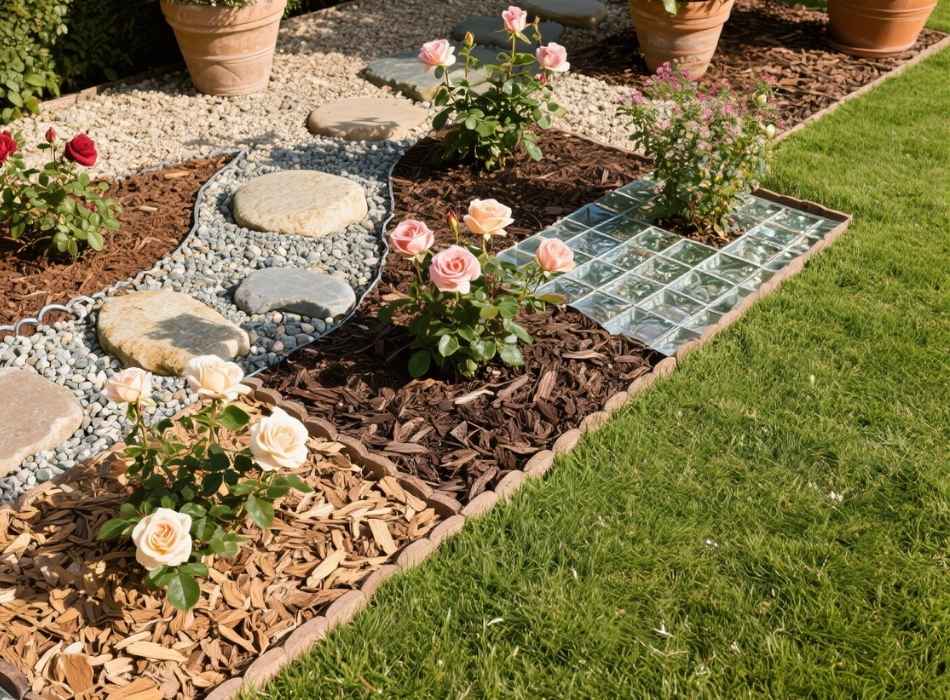
The best ground cover for roses depends on your climate, rose species, and personal preferences. Here are a few tips to make the right choice:
- Match Your Garden Aesthetic – Whether you’re aiming for a classic English rose garden or a modern minimalist look, select ground cover that complements your style.
- Consider Growth Habits – Some living ground covers can grow aggressively and compete with your roses for nutrients. Choose slow-growing or non-invasive options.
- Assess Your Climate – Drought-tolerant covers like gravel or sedum work well in hot climates, while moist, nutrient-retaining mulch is better for cooler or wetter climates.
- Replenish Regularly – Organic cover like mulch should be topped up once or twice a year to maintain effectiveness.
- Watch Out for Pests – Avoid thick, dense ground covers that can harbour pests like slugs or rodents.
Elevate Your Rose Garden with the Right Ground Cover
Ground cover is more than just a functional addition to your rose garden; it’s an essential tool for maintaining healthy, beautiful blooms year-round. From protecting roots to suppressing weeds and enhancing visuals, the right ground cover can transform the way you care for roses.
Whether you opt for traditional mulch, vibrant living covers, or modern gravel, remember to choose something that suits both your garden’s needs and your style. A thriving rose garden starts from the ground up!








